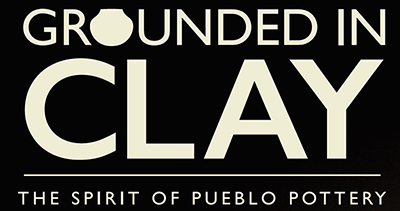Dr. Patricia Marroquin Norby
Purépecha
Curator Dr. Patricia Marroquin Norby (Purépecha) is the first full-time curator of Native American Art at The Metropolitan Museum of Art, New York, in the museum’s 150-year history. An award-winning art scholar and museum leader, she previously served as Senior Executive and Assistant Director of the Smithsonian’s National Museum of the American Indian–New York, and as Director of the D’Arcy McNickle Center for American Indian and Indigenous Studies at The Newberry, Chicago.
Patricia chose the following for the Grounded in Clay exhibit:
Bee Plant, Butterflies, and Borders
These two storage jars were created nearly a century apart, and the visual dialogue between them is compelling. Striking designs on both jars are painted with hand-harvested then ground and boiled bee plant, a natural pigment that blackens when fired and contrasts with the creamy-white slip. On one jar, rain, clouds, birds, and pollinating insects—specifically butterflies in a state of transformation—reference water and the sky. On the other, a seedling emerging from the red earth is greeted by the light and warmth of the sun as swelling rain clouds hover above. Pictorially and materially, both pots embody growth and the renewal of life—gentle reminders of the beauty and fragility of the natural world on which we humans depend. Broad bands of slip in La Bajada red and soft cream organize the jars compositionally, and echo the stratified earth of the mesas, cliffs, and arroyos of the Rio Grande Valley.
I like to imagine these two jars in someone’s home, resting in the cool shade of a family kitchen that smells of delicious simmering cooking. Their expertly scraped and smoothed voluminous forms hold fresh water or nourishing grains. They are a comforting presence, most likely part of a family’s or community’s daily life.
My own community, the Purépecha, also create hand-coiled pottery with images of water, celestial bodies, and animals. The Purépecha are Pueblo people, a fishing community known for their swirling “butterfly” nets, which they use on Lake Pátzcuaro in the volcanic mountains of Michoacán. Once, when I was visiting my great-grandparents’ pueblo outside Pátzcuaro, I bought a large clay jar painted with rows of fish, raindrops, and mountains. The woman who made the jar wrapped it in layers of a Mexican newspaper, then carefully placed it inside a cardboard box. On the plane heading home, I flew over 2000 miles (3200 km) carrying that clay pot in my arms. High above settler-imposed international borders, I held images of water, sky, and earth.


